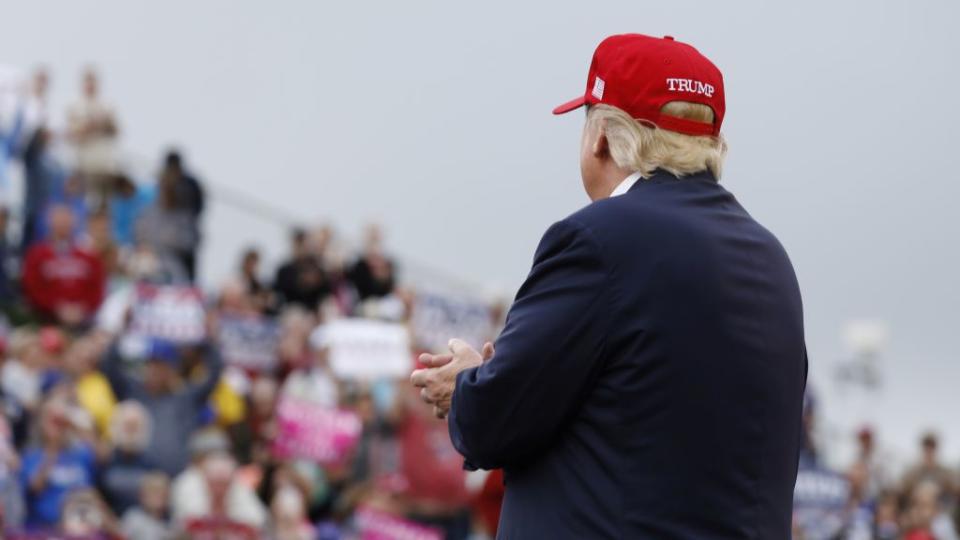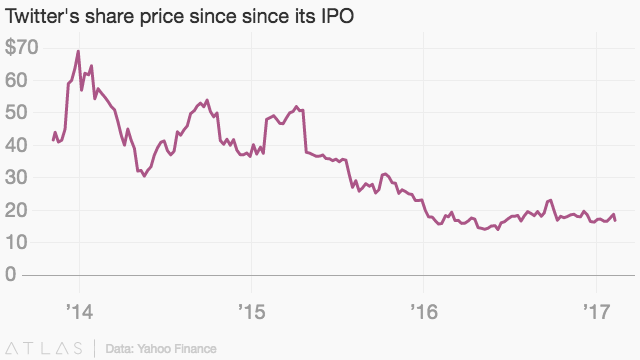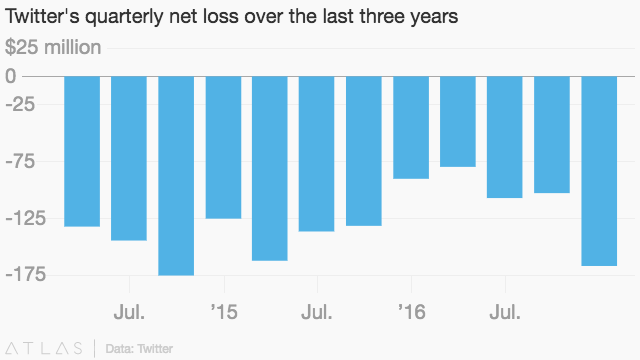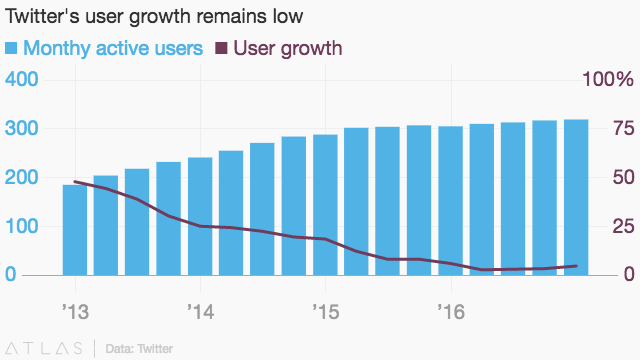Twitter’s earnings prove that influence doesn’t equal ad dollars

Twitter is a lot of things—an engine for social activism, a haven for trolls—but in the wake of US president Donald Trump, it has also emerged as the epicenter of modern political discourse. Unfortunately, that discourse doesn’t pay the bills.
On Thursday, Twitter reported fourth-quarter earnings, i.e. earnings for the quarter that included November’s US presidential election. The company realized a loss of $167 million in the quarter, compared with a loss of $90 million in the fourth quarter of 2015. Twitter said it expected earnings of between $75 million to $95 million for the first quarter of 2017, well below analyst expectations of $191.3 million. Which is all to say that the end of last year may have been a huge time for Twitter culturally speaking, but financially it was another blow. The news sent shares down as much as 10% on Thursday morning.

Twitter did see modest audience gains in the fourth quarter, recording an 11% increase in daily users over 4Q 2015, and a 4.59% increase in monthly average users. Tweet impressions and time spent on the platform logged double-digit year-over-year growth.

On the company’s earnings call Thursday, chief operating officer Anthony Noto diplomatically acknowledged the attention Twitter has gotten as a political pulpit. “I would say is that the president’s use of Twitter has broadened the awareness of how the platform can be used, and it shows the power of Twitter,” he said. “When he tweets, it sparks conversation and discussion.”
That’s an understatement. An avid tweeter, Trump has lobbed 140-character attacks at everyone from the New York Times to Nordstrom to Supreme Court justice Ruth Bader Ginsburg. Last month, his Twitter sniping led to Mexican president Enrique Peña Nieto canceling a planned visit. Just this morning, as Twitter was reporting its earnings, Trump was tapping out a mild tweetstorm about Connecticut senator Richard Blumenthal.
Unfortunately all that relevance has yet to translate into a viable business model. Twitter’s fourth-quarter revenue was $717 million, up just 1% over $710 million in 4Q 2015, and far below analyst estimates of $740 million. The company’s advertising revenue also fell for the first time since it went public: to $638 million, from $641 million in 4Q 2015. Nearly 90% of Twitter’s total revenue comes from advertising.

Even growth in monthly active users, although it has leveled off after a steady decline throughout 2014 and 2015, remains tepid.

Of course, Twitter isn’t resting its business strategy on an impulsive US president. The company has also made a big bet on live sports, for example, and continues to tweak its product and advertising offerings. But for better or worse, Donald Trump has become one of Twitter’s biggest brand ambassador in years—and the company doesn’t have much to show for it.

Sign up for the Quartz Daily Brief, our free daily newsletter with the world’s most important and interesting news.
More stories from Quartz:

 Yahoo Finance
Yahoo Finance 